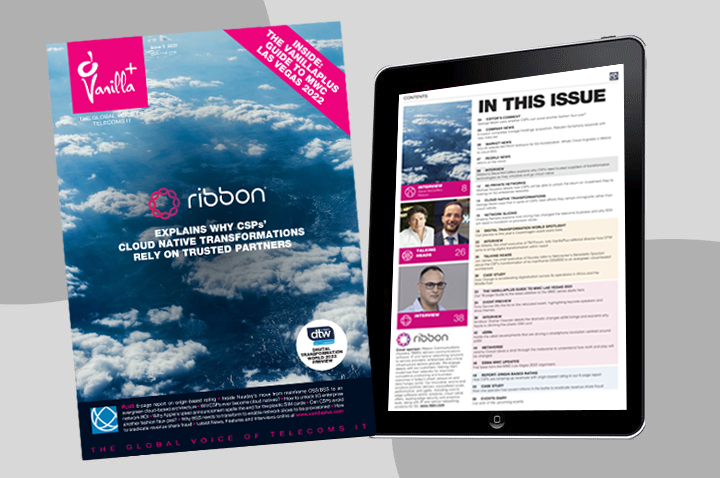As margins in existing markets erode and technology such as cloud and 5G create new business models and opportunities, Communications Service Providers (CSPs) now recognise that successful digital transformation requires radical change.
The pace of this change must be accelerated to drive business growth and be in line with the market, competitors, and new, more agile players.
Long term growth in the communications industry will be driven by a combination of things, digitalising existing infrastructure; automating and optimising operations; embracing platform-based business models; participating in new ecosystems and creating new marketplaces; and finally, by opening up existing digital assets to other market players who can rapidly assemble new and profitable value-added services on top of CSP infrastructure, says Nik Willetts, CEO, TM Forum.
According to a recent study by IDC, the majority of the 175 business executives surveyed recognised the value of a digital business model for future success, yet only 15% viewed their organisation as nimble enough to compete in the digital economy.
If CSPs are to harness the opportunities which present themselves today – opportunities which could represent more than $1.2 trillion in cumulative operating profit through 2025 (according to the World Economic Forum and Accenture), they must undergo a significant digital transformation.
Stuck in time
Despite playing a key role in underpinning the digital revolution, a recent survey conducted by TM Forum, revealed that 54 percent of CSPs’ previous attempts at transformation had been unsuccessful, highlighting the urgent need for a robust methodology to help leaders guide and manage change on an enterprise-wide basis. CSPs must therefore act fast to transform decades-old business models, cultures and infrastructures or else succumb to the pressures brought about by our digitally evolving world.
Success for CSPs in the digital era ultimately hinges on successful cross-industry cooperation, collaboration and standardisation in order to co-create, innovate, monetise and rapidly bring to market competitive new digital products and services. They need to think and move at web speed like the Googles and Amazons of the world, and progress with the same agility to bring about the radical change required for successful transformation
Finding the right path
For CSPs to succeed in their digital transformation, they must understand which path is best suited to their businesses. They have the choice of three realistic “digital destinations” available to them: one that is highly automated and able to offer its services and exceptional customer experience in a more efficient and cost effective manner; another, a developer and curator of new digital ecosystems which may cross many vertical industries and requires a shift towards platform-based business models; and a third, the blending of the two to become a true software-defined telco that is agile and able to rapidly innovate and monetise new services through collaboration with a wide variety of partners.
One thing is certain: maintaining the status quo will result in failure. To succeed, CSPs must completely transform their business and operating models, cultures and infrastructures. Without a coherent view of their destination, starting point and pathway, building and executing a successful digital transformation strategy will be next to impossible.
A holistic transformation
For CSPs, this period of discovery in which they evaluate their digital maturity objectively and dispassionately, is no easy task and requires fortitude. But obtaining a holistic view of how they operate, across all aspects of the business is essential to successful digital transformation.
To achieve this, CSPs should look to TM Forum’s new Digital Maturity Model (DMM). This model, specific to telecoms but also capable of taking into account differences between operator strategies, and what type of companies contributed to the model (i.e. consultancies, CSPs etc.), asks the right set of questions within five different dimensions: culture, customers, operations, technology and strategy which define a CSPs’ digital maturity.
The very creation of a maturity model forces organisations to analyse and assess the problem needing to be addressed. Secondly, the DMM facilitates the creation of goals and plans, both in the short term and long term. Last, but not least, the model provides a basis for organisations to gauge where they are in their transformation projects and benchmark themselves against others.
The road ahead
Many CSPs understand the need to transform and innovate, but up until now, they have not had the tools to approach digital transformation holistically. Legacy technology and cultures have seen the once forward-thinking telco become slow and stuck in time. But competition is growing, more than ever before, and there’s no time to waste if CSPs are to survive in this tough landscape.
For this to happen, they must possess the right tools to correctly understand their organisation, and gain a holistic view of what they are, where they’re going and how to get there. And to do that, there’s only one solution: an industry-agreed Digital Maturity Model endorsed by some of the world’s leading service providers including BT, China Mobile, China Telecom, China Unicom, Orange, PCCW Global and Vodafone.
The author of this blog is Nik Willetts, CEO, TM Forum
Comment on this article below or via Twitter: @ VanillaPlus OR @jcvplus






